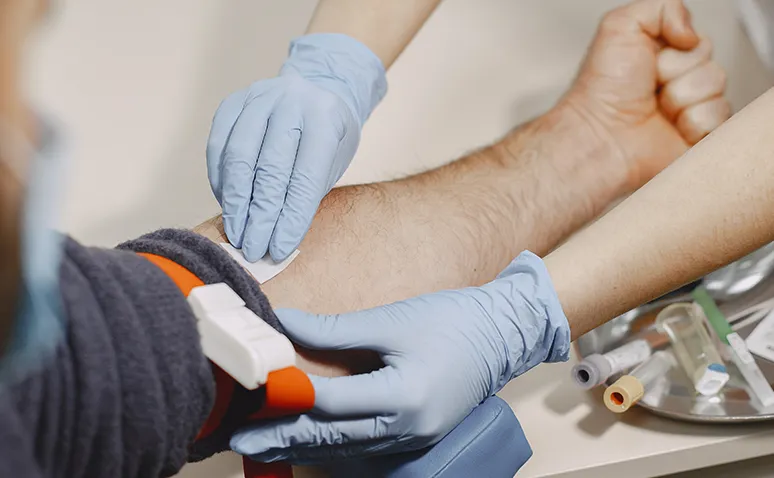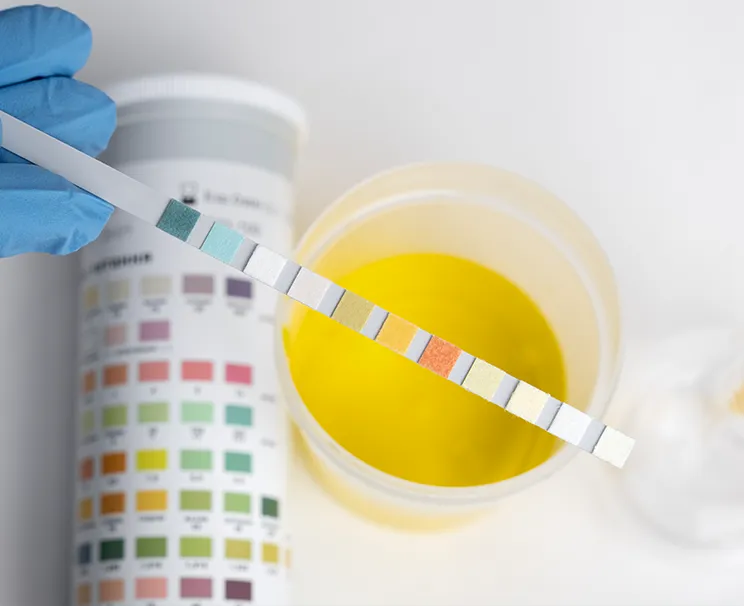
What is Anemia? Also known as “Kansızlık” (anemia in Turkish), anemia is a condition where the number of red blood cells in the blood drops below normal. Since these cells are responsible for carrying oxygen in the body, their reduction means insufficient oxygen reaches the tissues. This condition can lead to symptoms such as fatigue, weakness, and shortness of breath.
What is Anemia? Anemias are classified into different types based on the underlying health issue. Iron deficiency anemia occurs when there isn’t enough iron in the body and is the most common type of anemia. Folate deficiency anemia, aplastic anemia, and hemolytic anemia are other common types. It is important to determine the type of anemia to find the appropriate treatment method.
Symptoms of anemia vary by type and include:
It occurs when there isn’t enough iron in the body. Symptoms include fatigue, pale skin, shortness of breath, dizziness, and cold hands and feet.
- A type of anemia caused by a lack of vitamin B12. Symptoms include fatigue, pale or yellowish skin, tingling sensations, muscle weakness, and memory problems.
A reduction in the production of red blood cells due to insufficient folic acid intake. Symptoms include fatigue, pale skin, swollen and sore tongue, and digestive issues.
Red blood cells take on a sickle shape and lose their function. Symptoms include pain crises, jaundice, frequent infections, delayed growth, and vision problems.
An abnormal hemoglobin production due to a genetic disorder. Symptoms include bone deformities, delayed growth, dark urine, and splenomegaly.

What is Hemolytic Anemia?
Hemolytic anemia is a type of anemia that occurs when the body destroys red blood cells faster than they can be produced. Normally, red blood cells live for about 120 days. However, in hemolytic anemia, this lifespan is shortened.
What causes hemolytic anemia?
Causes of hemolytic anemia include genetic factors, autoimmune diseases, infections, certain medications, and toxins. In some cases, the body attacks its red blood cells, leading to their destruction. This condition is called autoimmune hemolytic anemia. Although the bone marrow increases the production of red blood cells, it cannot meet the body’s needs.
Symptoms of hemolytic anemia are similar to other types of anemia but may include specific symptoms such as:
- Fatigue
- Shortness of breath
- Pale skin
In addition, symptoms specific to hemolytic anemia include jaundice, dark-colored urine, and abdominal pain.
How is Anemia Treated?
Treatment varies depending on the underlying cause. Sometimes medications are used to suppress the immune system or reduce the destruction of red blood cells. In cases where treatment is unresponsive, surgical interventions like splenectomy (removal of the spleen) may be necessary.
Diagnosis of Hemolytic Anemia
Hemolytic anemia is diagnosed using various blood tests such as complete blood count (CBC), peripheral smear, reticulocyte count, and bilirubin levels. These tests help evaluate the structure, count, and rate of red blood cell destruction in the body. Once diagnosed, a treatment plan is created based on the severity and cause of the disease.
Treatment aims to manage symptoms and target the underlying causes of the disease.
Patients should be monitored regularly and, if necessary, treatment regimens should be adjusted. This can help improve quality of life and prevent potential complications.
What is Aplastic Anemia?
Aplastic anemia is a rare blood disorder in which the bone marrow fails to produce enough blood cells. Normally, the bone marrow produces the red blood cells, white blood cells, and platelets needed by the body. However, in aplastic anemia, the production of these cells is severely reduced.

What causes aplastic anemia?
While the exact cause is often unknown, factors such as autoimmune diseases, certain medications, toxic chemicals, viral infections, and radiation exposure are implicated. Symptoms of the disease include fatigue, easy bruising and bleeding, susceptibility to infections, and pale skin.
Aplastic anemia can be life-threatening if not treated.
Treatment options include immunosuppressive drugs, bone marrow transplantation, or blood transfusions. With appropriate treatment and monitoring, patients can lead a normal life.
How is Aplastic Anemia Diagnosed?
The diagnosis of aplastic anemia is usually made through a complete blood count (CBC) and bone marrow biopsy. These tests help evaluate the number of blood cells and the cellular activity in the bone marrow. Treatment plans are determined based on the severity of the disease, its course, and the patient’s overall health condition.
Bone marrow transplantation is one of the most effective treatments for young patients with a suitable donor.
However, for patients who cannot undergo transplantation or find a suitable donor, immunosuppressive therapies and supportive care are provided. It is important for these patients to adhere to hygiene rules to reduce the risk of infection and to have regular medical check-ups.
Aplastic anemia can be managed with careful monitoring and treatment, but it requires attention and dedication from patients and their families.
Anemia becomes dangerous when the body cannot carry sufficient oxygen. Severe anemia, in particular, can prevent the heart and other organs from getting enough oxygen, leading to organ damage. Additionally, serious symptoms like dizziness, fainting, and shortness of breath can occur. This situation may indicate an underlying serious illness and requires medical intervention.
The treatment and preventive measures for anemia depend on the type and cause of the disease. In iron deficiency anemia, iron supplements and iron-rich foods (red meat, spinach, legumes) are beneficial. In cases of anemia caused by a lack of vitamin B12, B12 supplementation may be necessary. For folate deficiency anemia, foods and supplements containing folic acid are used. A balanced diet and supplements taken under medical supervision are important in treating anemia.
Anemia is diagnosed through blood tests. A complete blood count (CBC) test measures the levels of hemoglobin and hematocrit in the blood to determine if a person has anemia. Additionally, the size and shape of red blood cells are examined. Symptoms include fatigue, pale skin, shortness of breath, dizziness, and heart palpitations. If these symptoms are present and blood test results are abnormal, an anemia diagnosis can be made.
Anemia does not directly cause weight gain. However, anemia can lead to fatigue and weakness in some people, reducing physical activity, which may contribute to weight gain indirectly. Additionally, medications used to treat certain types of anemia may increase appetite. Therefore, it is not the anemia itself but the treatment or consequences that may lead to changes in weight.
Yes, anemia can cause sleepiness. Anemia results in fatigue and weakness because the body cannot carry enough oxygen. This can make a person feel constantly sleepy throughout the day. If hemoglobin levels are particularly low, these symptoms become more pronounced, and a person’s energy decreases. Therefore, people with anemia often complain of sleepiness.










